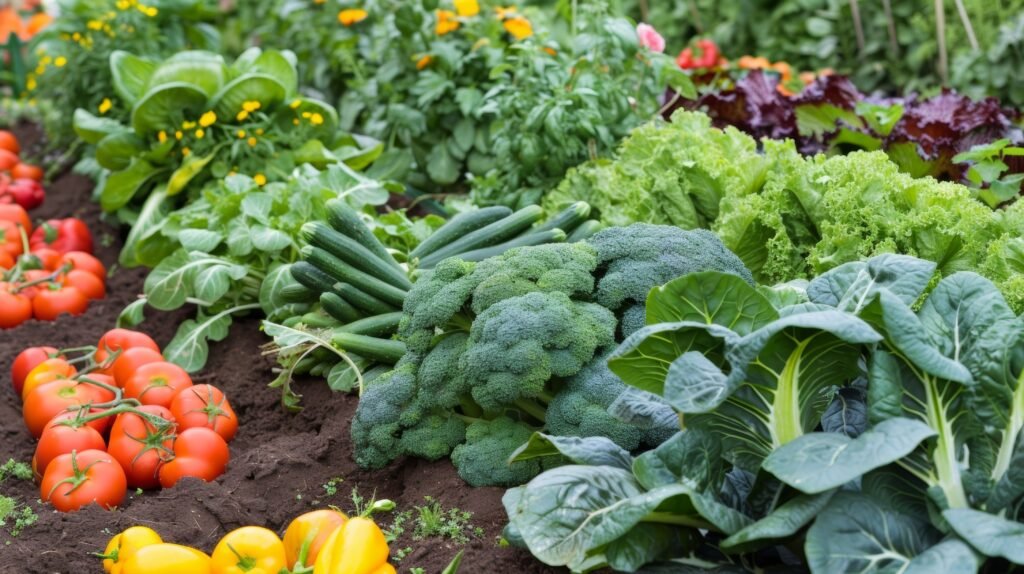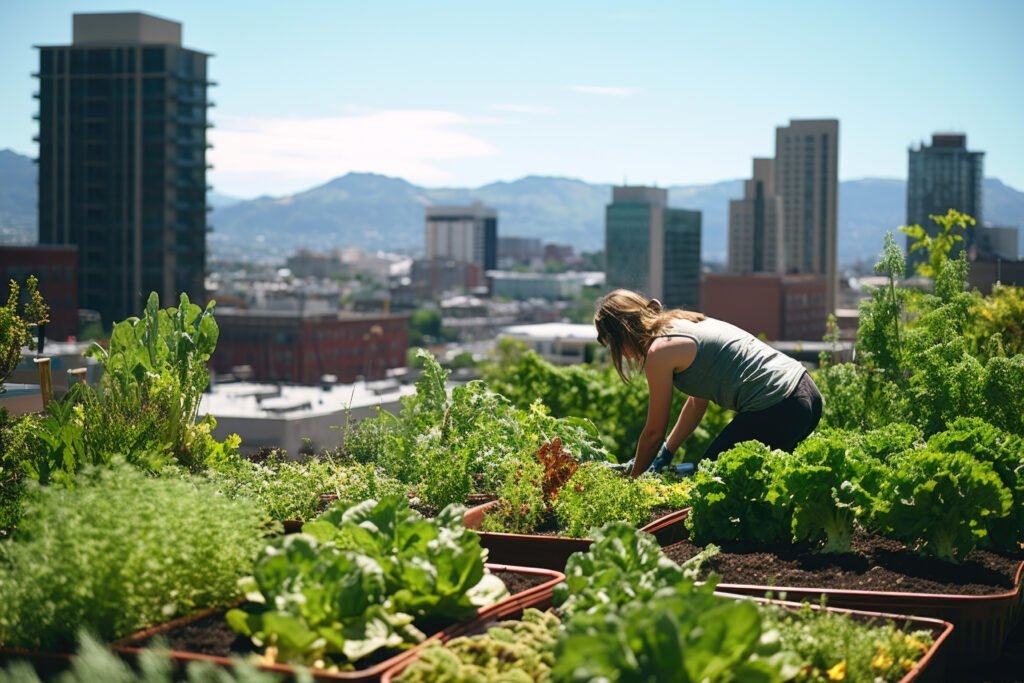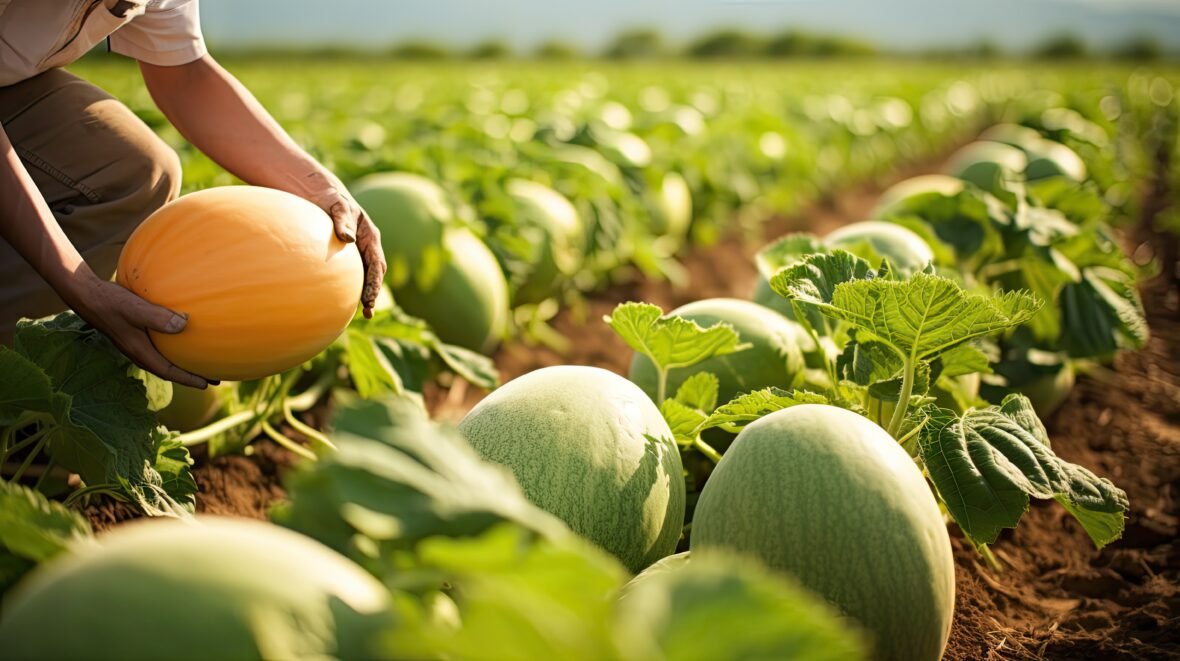The majority of vegetable varieties contain cultivars or types that mature more quickly than others. Before we go in, we’ve highlighted some basic procedures to follow before planting your fast-growing plants.
1.Choose Vegetables
2.Prepare the Soil
3.Plan Your Layout
Planting Bigger Vegetables More.

Planting Bigger Vegetables More
Overview of Rapid Vegetable Growth
In order to grow veggies rapidly, you will need to focus on setting up the optimal circumstances and applying some cunning strategies. Certain veggies grow more slowly by nature, but with the right care, others may grow more fast. You may speed the development of your garden by managing water effectively, taking exceptional care of your plants, enhancing the quality of the soil, and making sure it gets adequate sunlight. You may have a rich harvest in less time if you give these crucial factors some attention and plan ahead of time.
Also reading: I found treasure while digging the soil for the garden
Recognizing Growth Cycles in Vegetables
It is essential to understand how plants typically develop before learning about techniques for accelerating growth. Vegetables may be classified into three main groups based on how quickly they grow:
Rapid-developing vegetables: These plants often achieve maturity in 30 to 60 days. Some examples are radishes, lettuce, spinach, and various beans and peas.
Moderately growing vegetables: These plants reach maturity in 60–80 days. Examples include most tomato and pepper varieties, cucumbers, beets, and carrots.
Slow-growing vegetables: It takes these vegetables over 80 days to mature.Examples include melons, winter squash, pumpkins, and certain species of potatoes and onions.
Understanding the rates at which different crops mature will help you to plan your garden more successfully and, if required, make the proper decisions to speed growth.
Factors Impacting the Growth of Vegetables
Many variables influence the rate of vegetable development, such as sunlight, temperature, water, nutrients in the soil, wind, and space. Light is necessary for healthy development, and temperatures between 70 and 85 degrees Fahrenheit are necessary for sprouting and blossoming. While soil quality, including organic matter and pH, influences nutrient availability, water is crucial for plant development and nutrient absorption. Proper temperature and space also add to healthy plants.
Tips for Vegetable Growing Faster

Planting Bigger Vegetables
1. Begin with high-quality transplants or seeds
Choose seeds for rapid growth by choosing healthy cuttings from trusted sellers or farms, ensuring they have healthy roots and no signs of illness or stress.
2. Enhance Soil Properties
Add organic materials, such as compost or well-rotted manure, to your soil before planting. This enhances the availability of nutrients, water retention, and soil structure. To find the ideal pH and nutrient levels for plant growth, test the soil and make any necessary adjustments.
3. Provide Enough Sunlight Choose a sunny spot for your vegetable garden and reduce the amount of shade it receives from nearby structures or trees. Use movable pots or reflecting mulch to optimize exposure to sunlight.
4. Use succession planting techniques
As soon as a crop is harvested, fresh crops are sown in succession. This method makes the most of the available garden space and guarantees a consistent crop all through the growing season. Vegetables that mature quickly, such as radishes or lettuce, work well for succession planting.
5. Employ Season Extensions
Plants protected from early or late-season frosts by season extenders, like row covers, cold frames, or hoop buildings, enable you to plant earlier in the spring or harvest later in the fall. By supplying warmer temperatures and shielding plants from inclement weather, this lengthens the growing season and speeds up growth.
6. Select Quick-Growing Types
Choose vegetable cultivars that have short growth cycles. For instance, search for “early” or “fast-maturing” cultivars of squash, beans, or tomatoes. These cultivars are perfect for gardens with short growing seasons because they are bred to yield crops in less time.
7. Give Your Plants Enough Water
Water thoroughly and frequently to maintain a constant moisture level in the soil, particularly during dry spells or when plants are growing roots. To prevent water from evaporating from the soil top and to help retain soil moisture, apply mulch ( Planting Bigger Vegetables More ).
8. Apply fertilizer suitably
Apply fertilizer according to basic guidelines for vegetables or suggestions from soil tests. To supply necessary nutrients without overfeeding plants, use a balanced fertilizer or add compost as a supplement. Excess nitrogen can encourage leafy growth at the price of fruit development.
9. Manage Pests and Weeds
Vegetables grow more slowly when weeds compete with them for nutrients, water, and sunlight. By applying the proper herbicides, hand-pulling weeds, or mulching your garden, you can keep it weed-free. In order to reduce damage and stress on plants, keep a regular eye out for pests and diseases and take quick action when necessary.
10. Trim and Provide for Plants
Plants like tomatoes and cucumbers that are pruned and supported increase ventilation, lower the danger of illness, and focus energy on fruit production. Tomato plants should have their suckers removed, and vining crops should have cages or trellises to assist their growth.
11. Harvest Timely
When veggies are mature, harvest them quickly to promote continuous output. Harvesting on a regular basis stimulates the growth of new fruits and vegetables and keeps plants from focusing their energy on producing seeds.
In summary
it takes a mix of careful planning, good maintenance, and attention to plant needs to grow veggies quickly. You may speed up the growth of your vegetable garden and reap the rewards of a bountiful harvest by choosing fast-growing types, performing succession planting, optimizing soil conditions, and providing enough sunlight and water. To get the greatest results, try out several methods and make adjustments according to your unique growth conditions and tastes. You can grow a healthy vegetable garden that yields fresh, wholesome produce all through the growing season with commitment and thoughtful planning.




